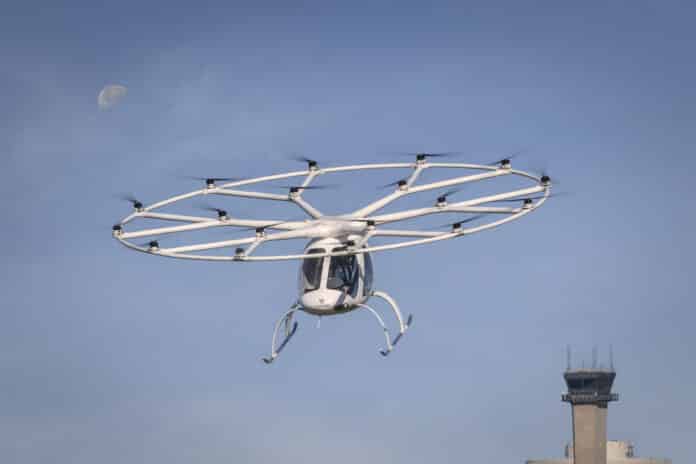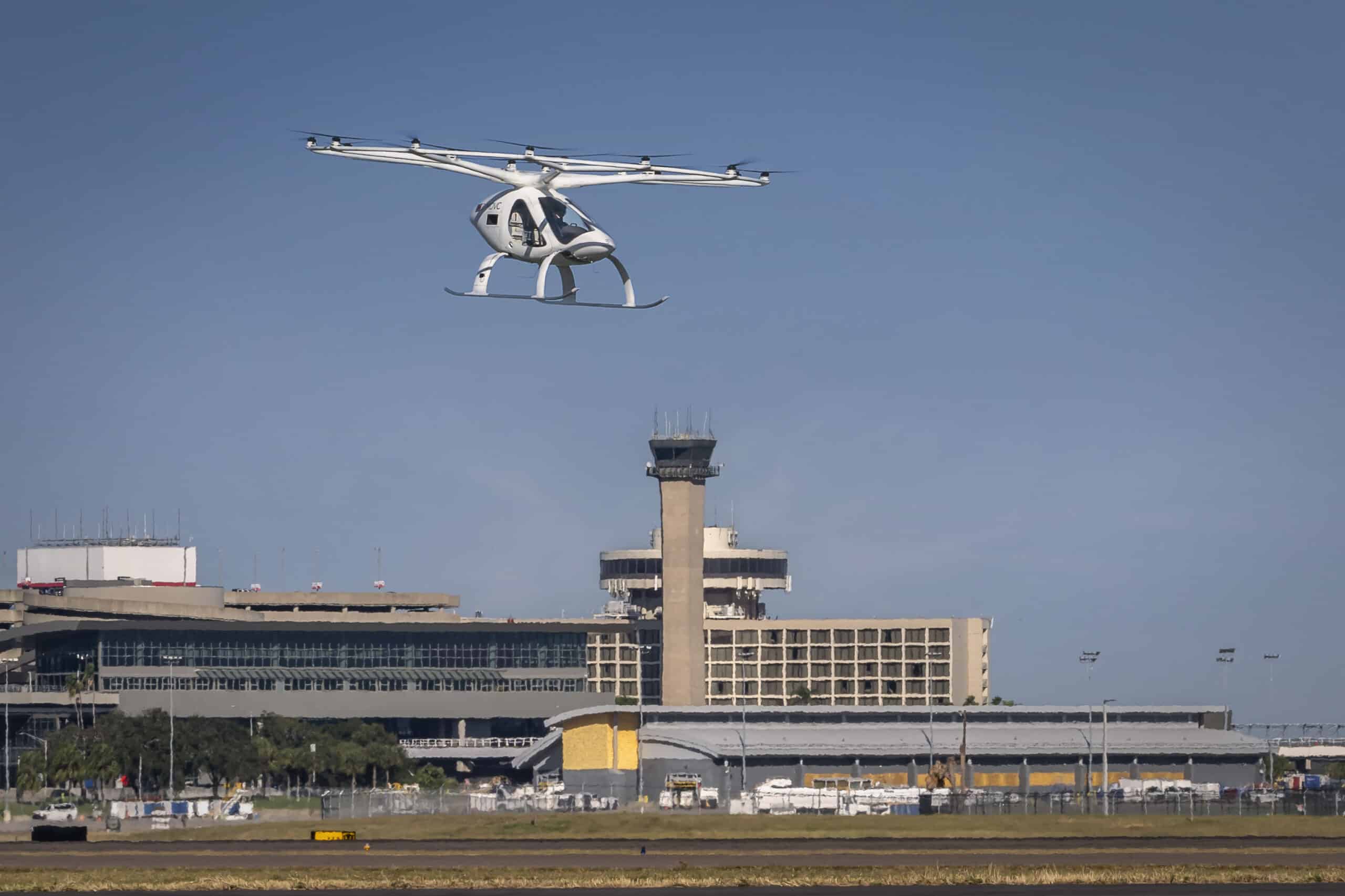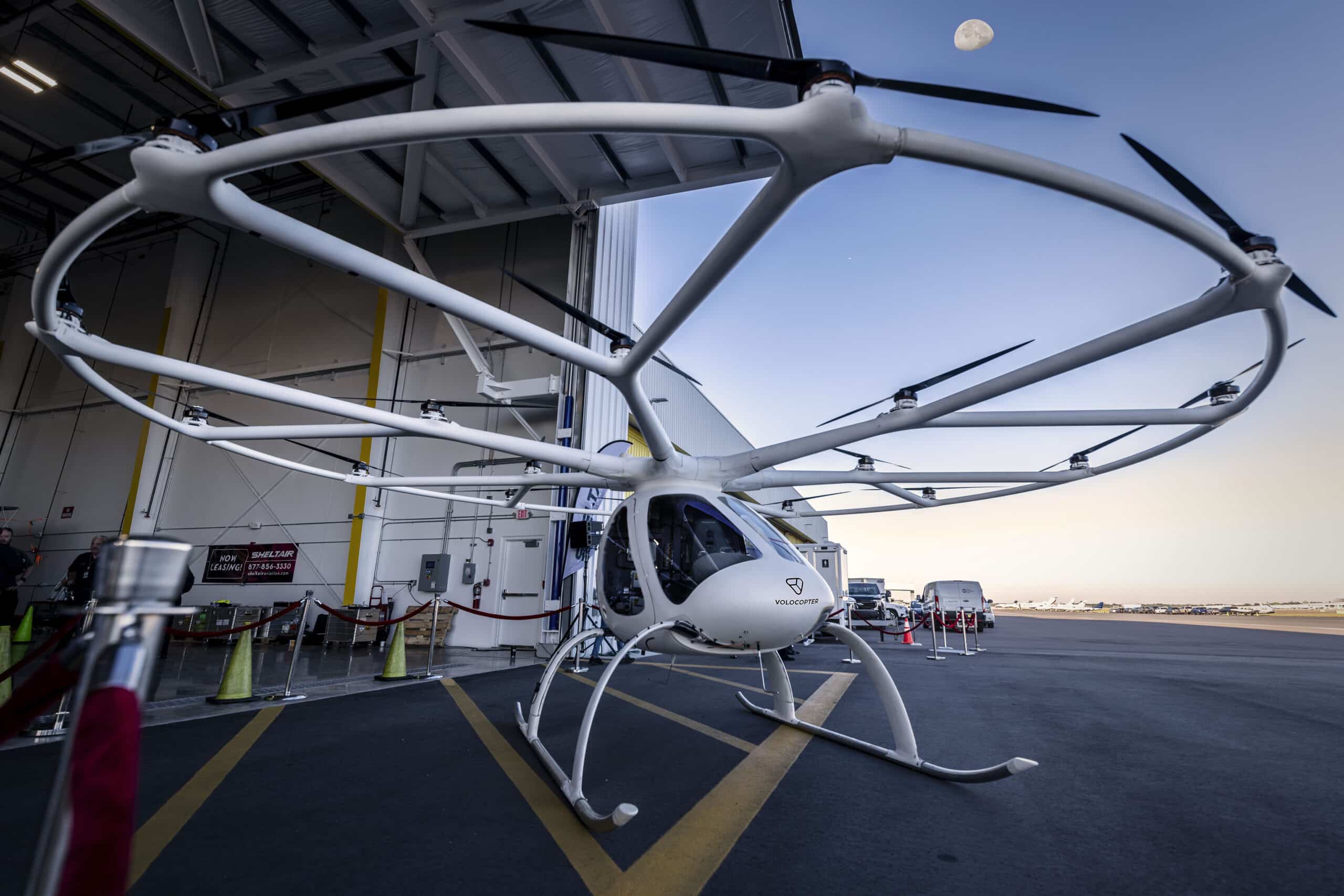Have you ever wished for a quicker, easier way to get to the Tampa airport? You could drive yourself, but traffic on the Sun Coast Parkway can be an absolute nightmare. Then there are those high parking fees at the airport. Taking an Uber would cost you around $75 each way, but you may still find yourself sitting in traffic. But what if you could take a leisurely ride above it all for about the same price as an Uber Black?
The transportation landscape of the Tampa Bay area may be changing soon, likely in a way more reminiscent of the 1960s cartoon series, “The Jetsons.” What was once science fiction is now becoming real life with the introduction of the Volocopter.
Tampa Airport Testing
In a test poised to revolutionize Bay area transportation, Tampa International Airport (TPA) made history last Thursday by hosting the first test flight of the Volocopter electric air taxi. The test was the first ever at a large U.S. airport and signifies a substantial leap towards a new era of urban mobility within the Tampa Bay area.
The eVTOL, or electric vertical takeoff and landing aircraft, is anticipated to offer a last-mile travel option, potentially linking major transportation hubs to local destinations. It’s a concept that could transform a traveler’s journey by connecting them directly from the Tampa airport to specific locales like Anna Maria Island, Clearwater, or, eventually, Brooksville.
Joe Lopano, the Tampa International Airport CEO, emphasized the day’s significance, envisioning a “new mobility” landscape where aircraft can traverse urban spaces above traffic, offering a more efficient intra-city travel option. This vision aligns with the broader goal of easing congestion and shaping the future of short to medium-distance transportation. Lopano also underscored the potential environmental benefits, such as reduced carbon emissions, attributed to the growing eco-conscious trends in the airline industry.
The test flight drew local and state officials, including Tampa Mayor Jane Castor and St. Petersburg Mayor Ken Welch, who collectively recognized the importance of embracing innovative transportation solutions to bolster the region’s economy and address transportation challenges.
The Technology
Volocopter, the German company behind the air taxi, conducted the groundbreaking urban air mobility (UAM) test flight near one of the Tampa airport’s hangars. The company’s CEO, Dirk Hoke, acknowledged the region’s supportive stance on innovative technologies and its conducive environment for pioneering such advancements.
The electrically powered aircraft, resembling a hybrid of a drone and a helicopter, has a small cabin for two passengers and is topped with multiple propellers. Hoke addressed the affordability and accessibility of the air taxis, suggesting that prices would decrease as the service scales up.
While the immediate use case of the air taxi is for relatively short trips, the broader objective is to offer an alternative to traditional road traffic, potentially alleviating congestion. Brett Fay, TPA’s Director of General Aviation, projected a significant evolution of this technology over the next decade, with expectations of up to 200 daily operations.
Officials are targeting a commercial launch in Paris by the 2024 Olympics, with TPA anticipating the introduction of flights around 2025-2026. Fay reassured the safety of these future flights, stating they would meet the stringent safety standards set by the FAA for aircraft certification in the U.S.
Volocopter, which expects European certification shortly, eyes FAA approval following the demonstration’s success, with sensors measuring the impact on air traffic during the test. The aircraft’s initial commercial capability is expected to cover a 12-mile range, with the prospect of expanding operations between cities in the following years.
Volocopter CEO Dirk Hoke said Thursday that the major limiting factor in the Volocopter’s capabilities is current battery technology. Once technology already on the drawing boards comes to life, the company can produce models that carry even more passengers and have a much-improved range.
Cost to Fly
The company believes the cost for a ride in the piloted model of the aircraft will be about $3.00 per passenger mile, eventually hoping to drop the price as low as $1.00 per mile in an autonomous model. The all-electric design significantly contributes to the Volocopter’s low cost. Unlike a helicopter, Volocopter’s multicopter design has almost no moving parts, so it will be considerably lower in maintenance requirements. (i.e., for every 3 hours a helicopter operates, it requires 1 hour of maintenance). The only wearing parts are the bearings in the motors.
Autonomous Models Coming Soon
The company reports it is test-flying the piloted version of the Volocopter daily at its headquarters in Bruchsal, Germany. In addition, they are already flight-testing the fully autonomous model, which requires no on-board pilot. As if the Volocopter wasn’t impressive enough, the company is also developing a heavy-lift cargo drone known as the Volodrone.
Despite the hurdles of federal regulations and current battery technology limitations, the demonstration has set the stage for a transformative transportation medium.




